Asus Brings Dot Matrix Display Headset, Keyboard to CES
Plus a mouse with an analog stick
Asus’s AniMe Matrix Display is a bit of a rare feature, not commonly imitated by other companies' products and rarely showing up in Asus’ own laptop lineup. That rarity doesn’t mean it’s a bust, though. It’s purely aesthetic, but the dot matrix technology it uses means you get to customize how your tech looks without slapping stickers on it.
If that sounds up your alley, but you’re more of a desktop person, Asus’ new peripheral lineup has your back. Under its ROG line, the company’s now bringing AniMe Matrix tech to a headset and a keyboard, too.
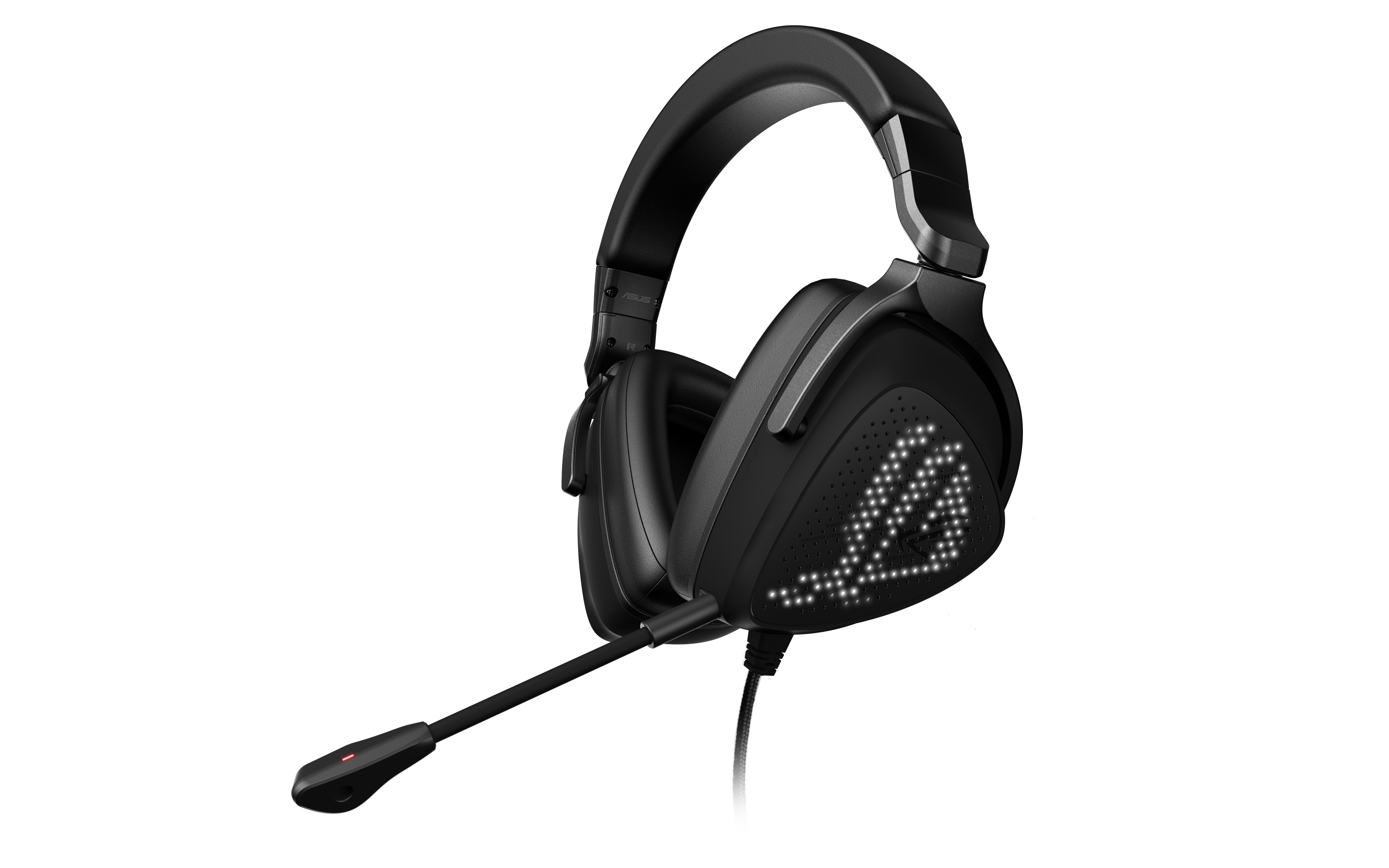
We’ve known about the ROG Delta S Animate for a while now, so what we were really hoping to see from this year’s CES was pricing and release info for it. Unfortunately, those details are still under wraps for now, but the Delta S Animate is worth a look regardless. An upgrade to the already fantastic Delta S headset, the Animate boasts many of the same specs as its predecessor, including 50mm Neodymium magnet drivers and 32 ohms impedance, but its true selling point is its ergonomic D-shaped earcups with customizable animated dot matrix outer displays. Like on Asus’ laptops, these displays can play short custom pixelated animations either on their own or in response to audio and in-game activity like killstreaks. You can also set them to show off static images, of course, plus there’s included animations already baked into Asus’ Armoury Crate software.
You’ll be limited to white, but if you’re a streamer, this pair of cans should be a unique way to add some extra flair to your feed.
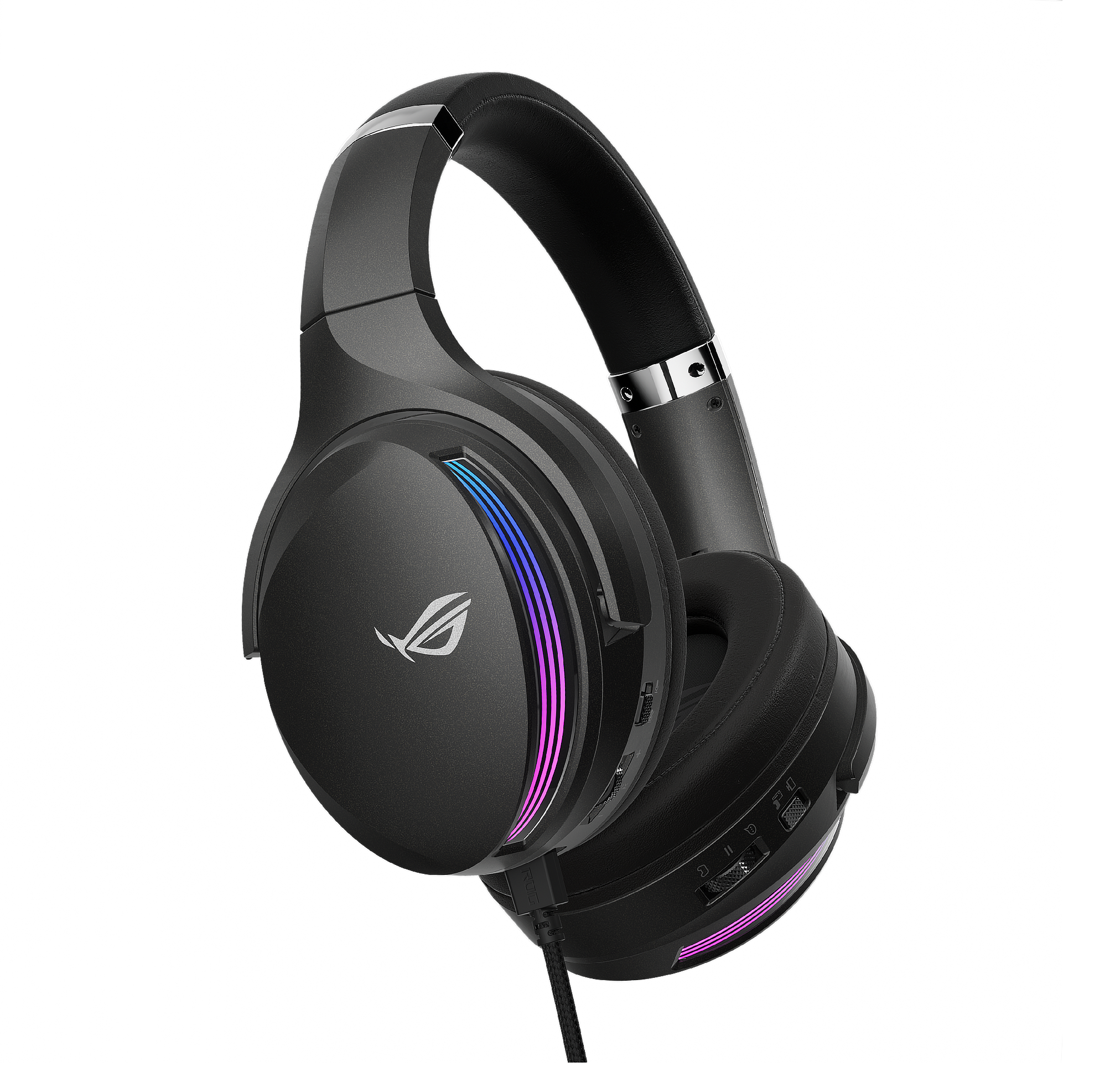
In the same vein, Asus is also announcing the ROG Fusion II 500 headset today, which has similar specs to the Delta S Animate but has more traditional, circular earcups with plain-old RGB rather than AniMe Matrix displays. That RGB should also impress an audience, which is a great excuse for paying extra for lighting effects that you won’t be able to see when actually using the headset.
Of course, if you’re not a streamer and don’t want lighting effects you won’t actually get use out of, there’s the Tuf Gaming H1 and H1 Wireless headsets, too. Asus hasn’t made the specs for these known to us ahead of time, but these are likely refreshes for the company’s existing H1 headsets. The existing cans are slightly weaker than the Delta S Animate and ROG Fusion II 500, with 40mm drivers instead of 50mm ones, so maybe we can expect to see a 50mm upgrade today. If so, they’ll be a good option for anyone who doesn’t need a showy headset. We’ll update this article if we learn more.
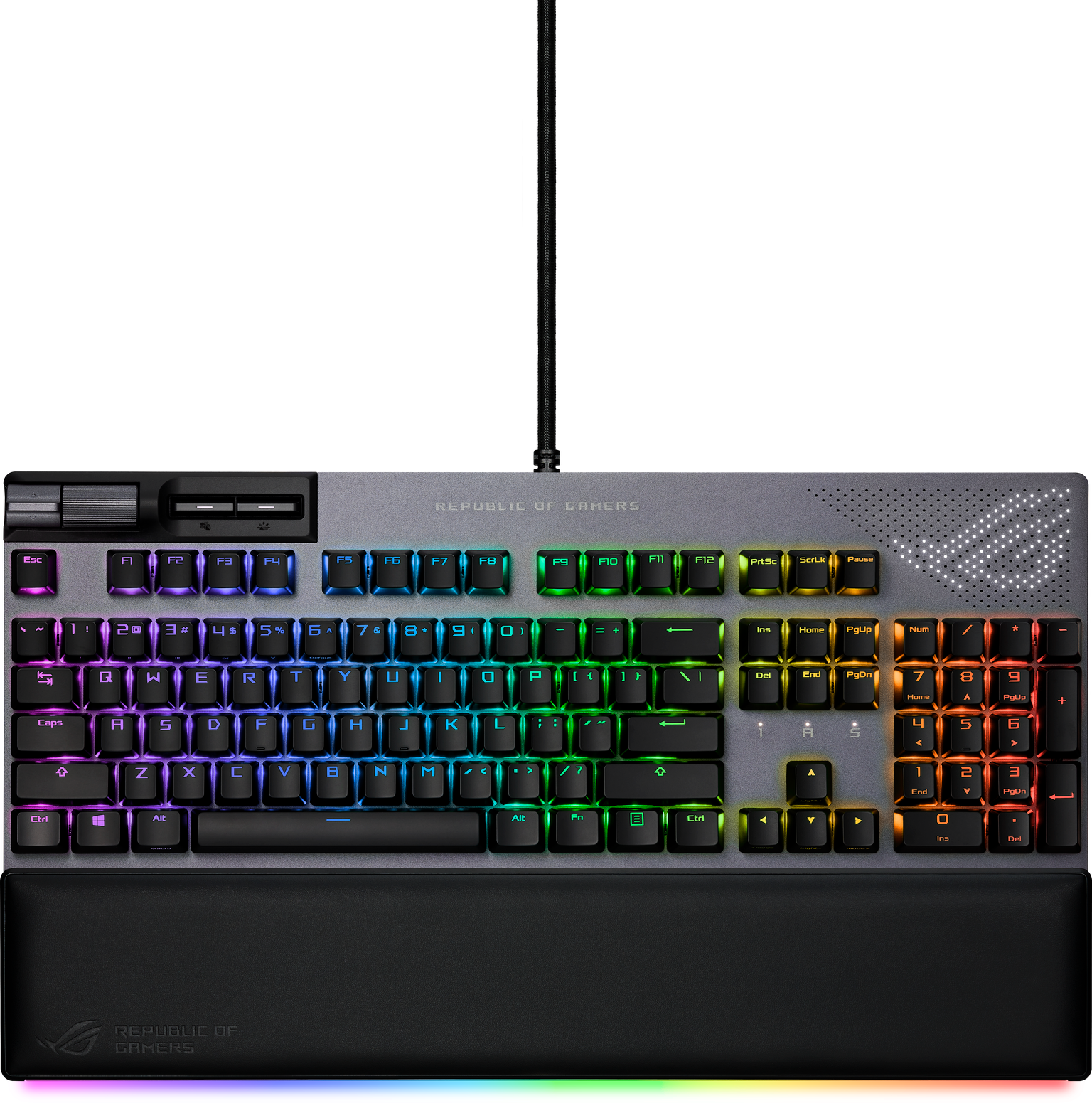
Back to AniMe Matrix, the new ROG Strix Flare II Animate keyboard comes packed with a dot matrix display that you can actually see when using it. This means it doesn’t just come with all the same features as the Delta S Animate, but can also show system status indicators such as brightness level and battery life, plus it can give you mail notifications and time and date reminders.
Get Tom's Hardware's best news and in-depth reviews, straight to your inbox.
As for the keyboard itself, it’s full-size, hot-swappable and comes with your choice of ROG NX Blue, Brown or Red switches. The keycaps are double shot PBT, and the keyboard has pre-tuned stabilizers under larger keys like the spacebar to help reduce noise. There’s also sound dampening foam inside, an aluminum alloy top plate, USB 2.0 passthrough and an 8,000Hz polling rate.
Per-key RGB and a lightstrip on the front of the keyboard accentuate the AniMe Matrix visuals with even more lighting. In an odd twist, you can cover up the lightstrip with a detachable faux leather wrist rest, but the wrist rest itself makes up for it with its own front-facing lightstrip.
Finally, for the Flare II’s hardware, there are dedicated wheels for play/pause, skip track and volume. Plus, two general use hotkeys sit right next to the media keys to fit whatever purposes you need.
As for software features, the Flare II Animate’s got Aura Sync compatibility and on-the-fly macro recording using a special two-key combo. That’s on top of the AniMe Matrix customization baked into Armoury Crate, of course.
Asus will also be releasing a version of the Flare II without the AniMe Matrix display, if you’re still not sold on it, although that version will also lack hot-swappable switches.
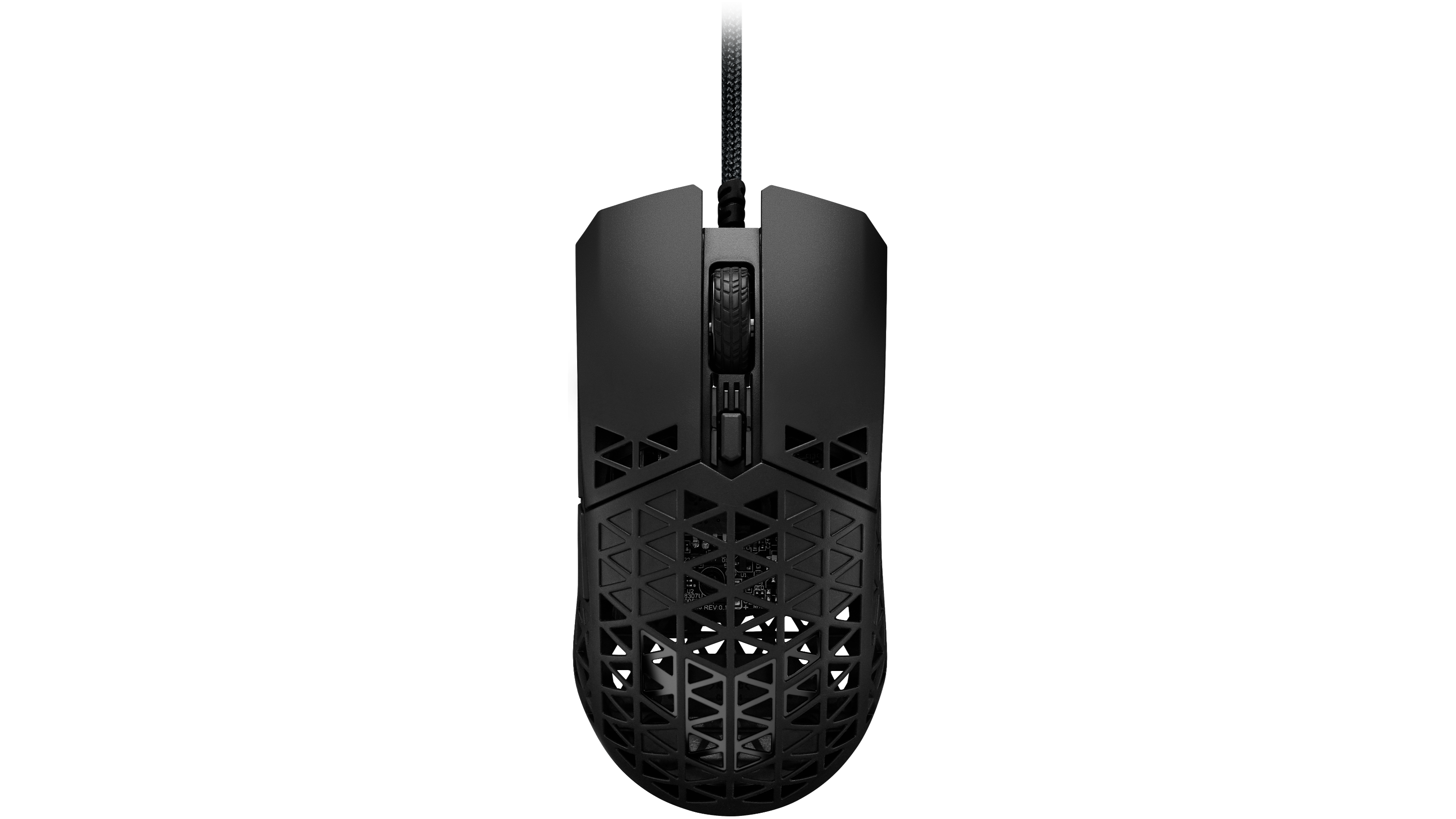
Finally for this year’s CES, Asus’s ROG peripherals team is also pulling back the curtain on a trio of mice, though there’s no unusual lighting effects to brag about here. The TUF Gaming M4 Air does aim for the ultra-lightweight category with a body covered in triangular cutouts, though. It’s got a 16,000 DPI optical sensor and weighs just 47g. Despite having electronics open to the air, Asus is also claiming it’s got IPX6 water resistance to help guard against spills or, let’s face it, sweaty palms. 6 buttons allows for minimal mapping options, but for something more advanced, you’ll want to upgrade to the ROG Chakram X.
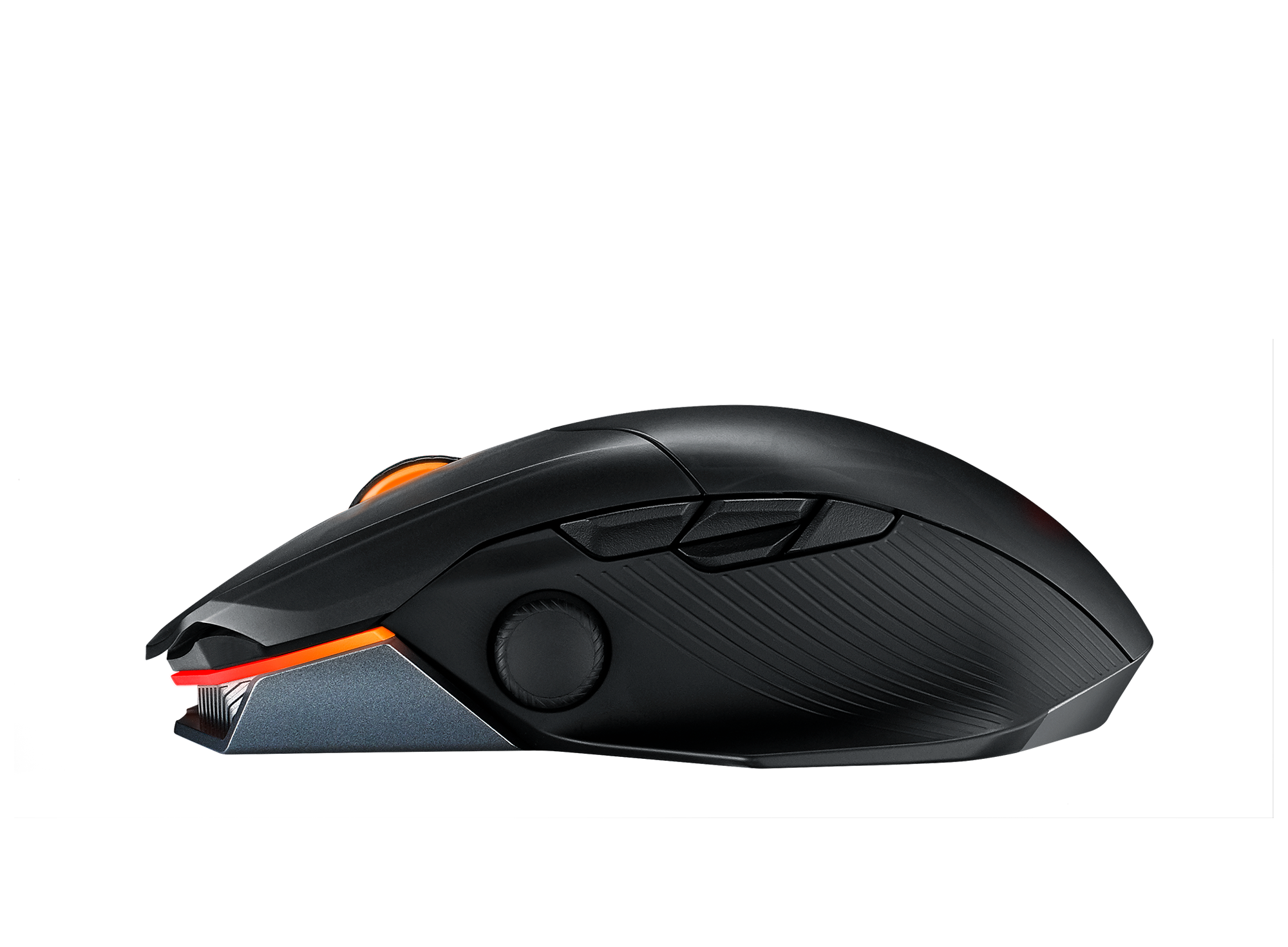
This mouse can push up to 36,000 DPI and can also connect over USB 2.0, Bluetooth 5.2 and 2.4 GHz RF. Its left and right mouse buttons have ROG micro switches inside and it swaps the cutout-focused body for a closed body with 9 zones of RGB. You’ll also get 7 programmable buttons, a DPI swap button, a mode switch button and a pairing button. What’s truly exciting, though, is the analog stick built into the left side of the mouse. This type of control is invaluable for games like flight sims, but is rare on many PC peripherals. But if you’re not sold, you can also swap the stick to a digital input mode to gain 4 extra buttons.
Meanwhile, if you liked the sound of the TUF Gaming M4 Air but want something wireless, the TUF Gaming M4 Wireless is just that. You’ll lose the cutouts on the body, the max DPI will drop down to 12,000 and the weight will now be closer to 62g, but you’ll gain 2.4 GHz and Bluetooth LE connectivity in the tradeoff.
Unfortunately, we don’t have pricing and release date info on all of these peripherals yet. So far, we know that the ROG Fusion II 500 headset will hit stores in Q1 of this year, as will the ROG Chakram X mouse. Both versions of the Flare II keyboard have a more clear time slot for late January this year, and are also the only products here we have pricing info for. The Flare II Animate is set to sell for $219, while the regular Flare II will cost $179.
Michelle Ehrhardt is an editor at Tom's Hardware. She's been following tech since her family got a Gateway running Windows 95, and is now on her third custom-built system. Her work has been published in publications like Paste, The Atlantic, and Kill Screen, just to name a few. She also holds a master's degree in game design from NYU.
